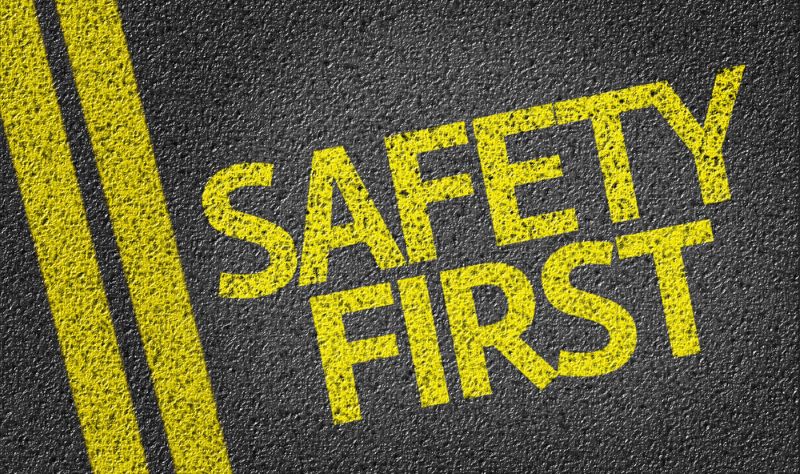If you’re carrying a bit of extra weight or if you’ve let yourself get more out of shape than you usually would, you may think that push-ups won’t be the right exercise for you.
However, this might not actually be the case. Push-ups are a highly versatile exercise that can fit in with most fitness programs, workouts, and goals.
That being said, push-ups won’t be suitable for everyone, but they can be a very effective addition to most exercise plans.
In this article, we talk about the relationship between push-ups and fat people.
In it, we discuss safety aspects, the difficulty levels, and how to do push-ups if you have more body fat than other gym-goers.
We also look into other exercises that could be useful to larger-than-average people too.

Can A Fat Person Do Push-Ups?
Yes, a fat person can do push-ups providing they have enough upper body strength to do them effectively.
What’s important to remember is that, during standard push-ups, you’ll be lifting around 70% of your total body weight.
This is worth keeping in mind as, obviously, the more you weigh, the more weight you will have to lift during push-ups.
This means that you’ll need to have a pretty high level of muscular strength if you’re carrying high levels of body fat.
While this might be the case for some people, for others, being overweight is the result of having low muscle mass (and therefore strength) and high body fat.
There aren’t too many reasons why a fat person can’t do push-ups, but there may be some physical limitations as to whether it’s possible for them to do push-ups or not.
Are Push-Ups Harder For Fat People?
Yes, push-ups are harder for fat people.
When you do regular push-ups, at certain points throughout the movement, you’ll be lifting around 70% of your total body weight.
Obviously, the more you weigh, the more weight you’ll be required to lift during push-ups which will make them harder.
If you add this to the fact that people with high levels of body fat will probably have lower levels of muscle mass, that means they’ll be trying to support and lift more weight with less strength than someone who’s lighter.
You should also keep in mind that, commonly (although not always), people with high body fat levels will have been less active previously resulting in lower fitness levels. Which, again will make push-ups quite a bit harder for them to perform.
Are Push-Ups Safe For Fat People?

As a general rule, push-ups are a fairly safe exercise. There are some extra safety considerations to keep in mind if you’re overweight though.
The first is that your working muscles and joints will be placed under more stress as they will be lifting more weight than someone who weighs less than you.
This is important to remember, as although push-ups are a safe exercise, putting excessive stress and pressure on your muscles and joints is never a good idea.
You also need to keep any current or previous injuries and health issues in mind too.
If you’re carrying extra weight, then trying to do push-ups could potentially cause some problems if you aren’t entirely fit and healthy, to begin with.
Despite all that, it is usually safe for fat people to do push-ups.
You may have to adapt them in certain ways, and you may have to keep your rep and set numbers low, but, usually, push-ups can be done by overweight and unfit people.
How To Do Push-Ups For Fat Guys
Doing regular push-ups straight away may be too much of a challenge for you if you’re currently carrying high levels of fat.
Fortunately, push-ups are a highly versatile exercise that has a whole load of variations that can be performed by people with different levels of fitness, strength, and endurance.
If you aren’t able to do regular push-ups, starting with wall push-ups can be a great thing to do.
Wall push-ups are done with you standing upright instead of the usual high plank position on the floor.
You simply put your hands on a wall, take a couple of steps backward, and then perform the push-up movement from there.
Wall push-ups keep a lot of your body weight on the floor so you have to move a lot less of it, but you still get some of the benefits of doing the push-up movement.
If you can manage wall push-ups then incline push ups could be the next step for you.
Incline push-ups are closer to regular push-ups but your hands are on an elevated surface like a step or similar. This, like wall push-ups, reduces the percentage of your total body weight you have to lift during the exercise.
You can continue gradually moving to progressively more and more challenging push-up variations (like Mike Tyson push ups) until you’re able to perform regular push-ups for your desired number of reps and sets.
How Many Push-Ups Can A Fat Person Do?
This will depend on how strong, how fit, and how healthy they are.
It’s extremely difficult to say how many push-ups anyone should be able to do as there are so many variables involved.
However, as a general rule, someone considered fit will likely be able to do 20 repetitions of push-ups in a single set.
If you’re currently overweight and lacking strength and overall fitness, doing somewhere between 1 and 5 push-ups could be a good starting point for you.
Once you start doing push-ups, you can continue to increase the numbers until you can do the number of reps and sets that will help you reach your overall fitness goals.
Do Push-Ups Help You Lose Weight?
Push-ups can help you lose weight but they won’t be enough on their own.
To burn fat and lose weight, you’ll need to do a combination of cardiovascular exercise, resistance training, and follow an effective nutrition plan.
While push-ups fit into the resistance training category, they aren’t particularly good at increasing your heart rate for cardiovascular benefits.
Common Mistakes To Avoid
There are some common mistakes that people make when performing push-ups, especially if they’re new to the exercise or have a higher body weight.
Here are some mistakes to avoid when doing push-ups:
Starting with Full Push-Ups
One of the most common mistakes that people make when starting with push-ups is attempting to do full push-ups right away.
Full push-ups require a lot of upper body strength and can be challenging for anyone, especially those with a higher body weight.
Instead, it’s important to start with modified push-ups and gradually work up to full push-ups as you build strength and endurance.
Improper Hand and Arm Positioning
Hand and arm positioning are essential for performing push-ups correctly and avoiding injury.
One common mistake is placing your hands too far apart or too close together, which can put unnecessary strain on your wrists and elbows.
It’s important to position your hands shoulder-width apart and keep your elbows close to your body to engage the proper muscles and avoid injury.
Incorrect Body Alignment
Proper body alignment is essential for getting the most out of your push-ups and avoiding injury.
Avoid letting your hips sag or your lower back arch, which can put pressure on your lower back and neck.
You should maintain a straight line from your head to your heels and engage your core muscles to keep your body aligned.
Moving Too Fast
Another common mistake is moving too quickly through the push-up motion, which can reduce the effectiveness of the exercise and increase the risk of injury.
Instead, perform push-ups slowly and with control, lowering your body to the ground and pushing back up at a moderate pace.
Not Resting Enough
Finally, it’s important to give your body enough time to rest and recover between sets of push-ups.
Many people make the mistake of not resting enough between sets, which can lead to muscle fatigue and injury.
You should always take breaks between sets and give your muscles time to recover.
Progressing to Full Push-Ups
If you’re new to push-ups or have a higher body weight, full push-ups can be hard to do. However, with practice and patience, anyone can work up to doing full push-ups.
Here are some tips for progressing to full push-ups:
Start with Modified Push-Ups
Before attempting full push-ups, it’s important to start with modified push-ups to build strength and endurance.
Modified push-ups can be performed with your hands on an elevated surface, such as a bench or step, or on your knees.
Begin with a modified push-up variation that challenges you, but that you can perform with proper form.
Increase Repetitions and Sets
As you get comfortable with modified push-ups, gradually increase the number of repetitions and sets you perform.
Aim to perform 3-4 sets of 8-12 repetitions of modified push-ups, taking breaks between sets to allow your muscles to rest and recover.
Incorporate Variations
To continue building strength and endurance, it’s important to challenge your body with different variations of push-ups. This can include staggered push-ups, diamond push-ups, and wide-arm push-ups.
By incorporating different variations, you can work different muscle groups and prevent boredom in your workout routine.
Practice Negative Push-Ups
Negative push-ups are a great way to build strength and endurance for full push-ups.
To perform a negative push-up, start in a full push-up position and lower your body to the ground as slowly as possible.
Once your chest is on the ground, use your knees or an elevated surface to push yourself back up to the starting position. Aim to perform 3-4 sets of 5-8 negative push-ups, taking breaks between sets to rest and recover.
Gradually Work Up to Full Push-Ups
Once you feel comfortable with modified push-ups, have increased your repetitions and sets, and have incorporated different variations, you can begin working up to full push-ups.
Start by attempting one full push-up and gradually increase the number you perform over time.
Conclusion
In summary:
- Fat people can do push-ups as long as they have sufficient upper body strength to push 70% of their total bodyweight.
- If you’re overweight, you should start with easier push-ups variations, like incline push-ups, before progressing to regular push-ups.
That’s all for this article, but can you do push-ups with a hernia? Or how many push-ups should a 15 year old do?
Hope this helped!
Sources
https://www.livestrong.com/article/444004-how-much-of-your-body-weight-do-you-lift-in-a-pushup/
I’ve been in the fitness and strength training industry for nearly a decade. In that time, I’ve gained 30 pounds of muscle, written hundreds of articles, and reviewed dozens of fitness supplements. As for my educational background, I’m a currently studying for my Active IQ Level 3 Diploma in Personal Training.

